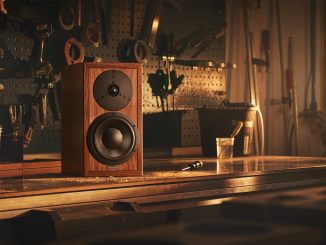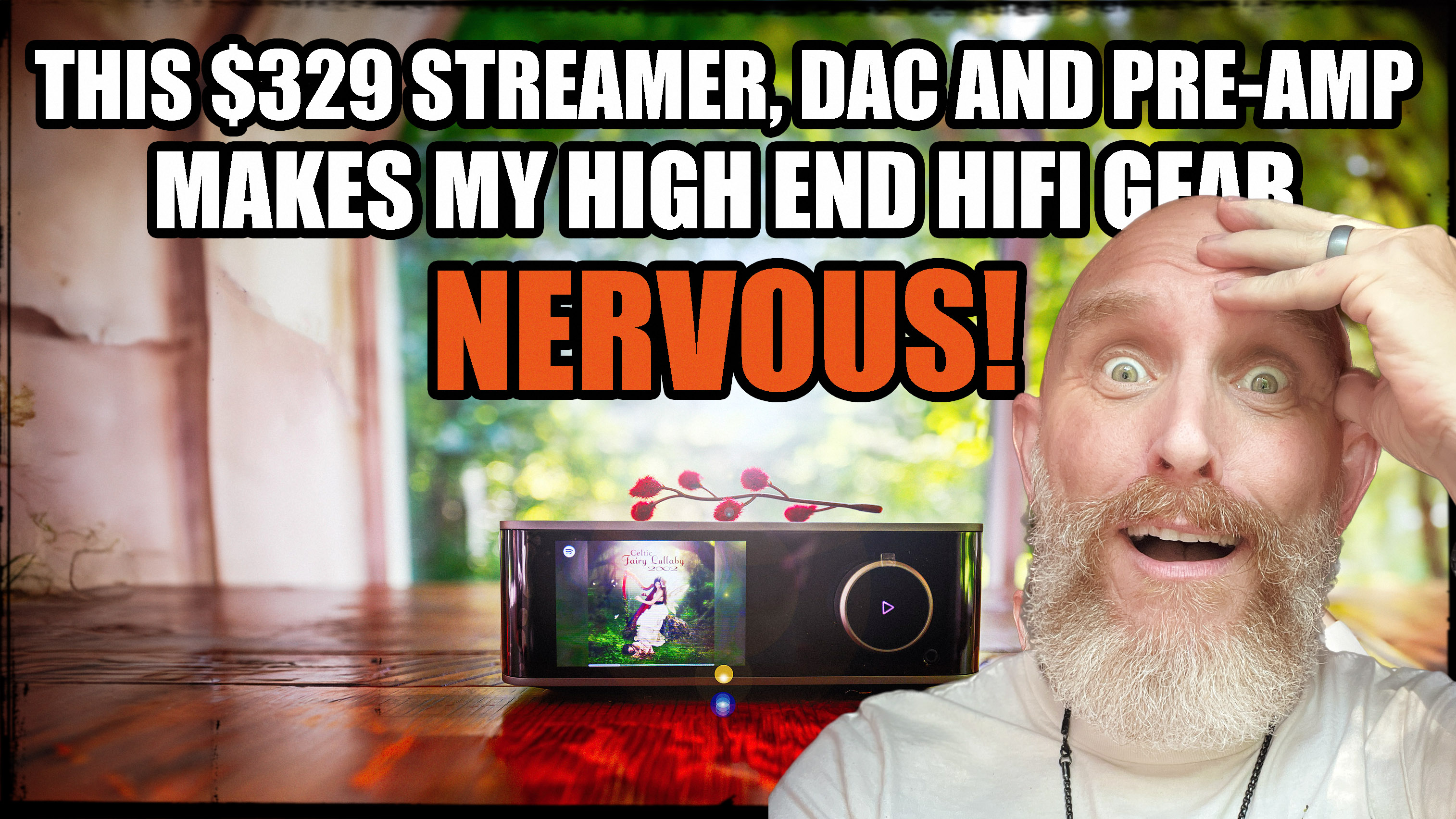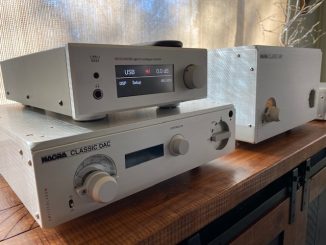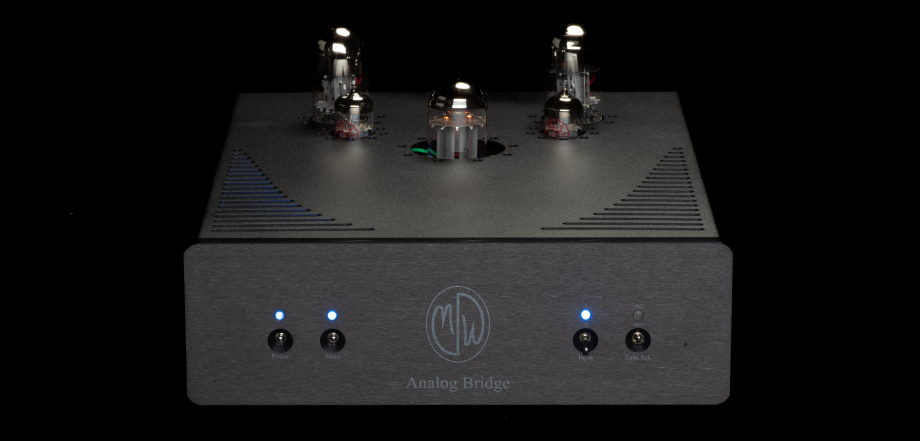
ModWright Analog Bridge. Add the TUBE SOUND to your HiFi!
By Steve Huff
The Video Review!
One of my fave tubes is the 6SN7 and I love using this in tube preamps. Here it adds its smooth warm vibe to your system, fleshing it out some.
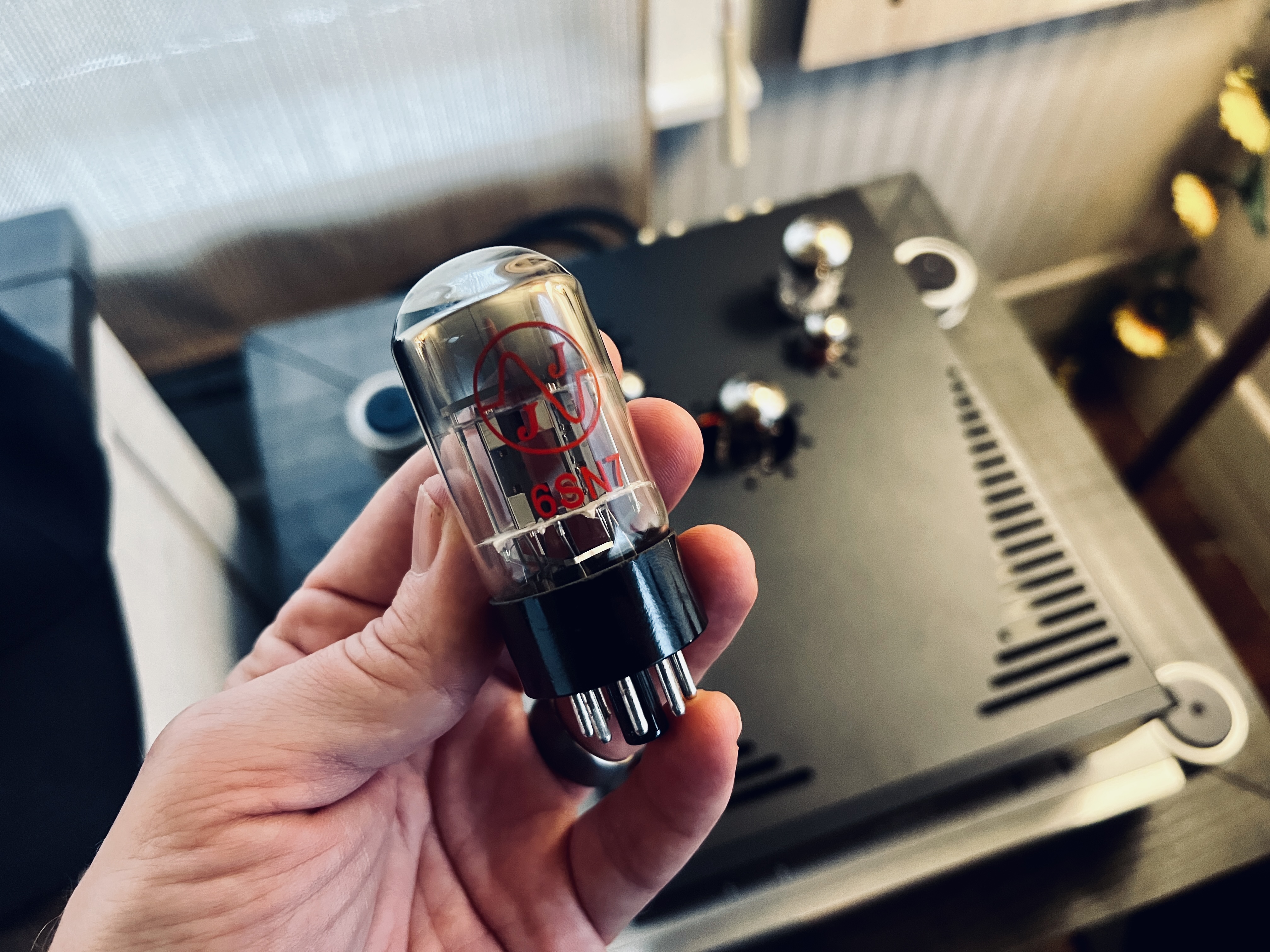
Some audio pieces (let’s just say a preamp or amplifier) may use tubes to produce a unique type of sound which can be more romantic, more full bodied or even more three dimensional. Some modern day tube products have a more modern sound but either way, when tubes are in a an audio system there is usually some magic going on that lures us to listen more deep into the night. At least this is what tubes do for me.
There are many varieties of amplifiers that use tubes. Some are S.E.T. (Single Ended Triode) amps that may pump out 1-5 watts of power but offer surreal resolution and body which can be haunting at times, with the right very sensitive speakers of course. Others may be a push pull type of tube amp that harness more power but these types of designs, for me, always seem to lose some of the magic that tubes are known for. There are also several tube types out there, all of which can be used in different ways but at the end of the day, most of us associate tubes with a more romantic musical sound.
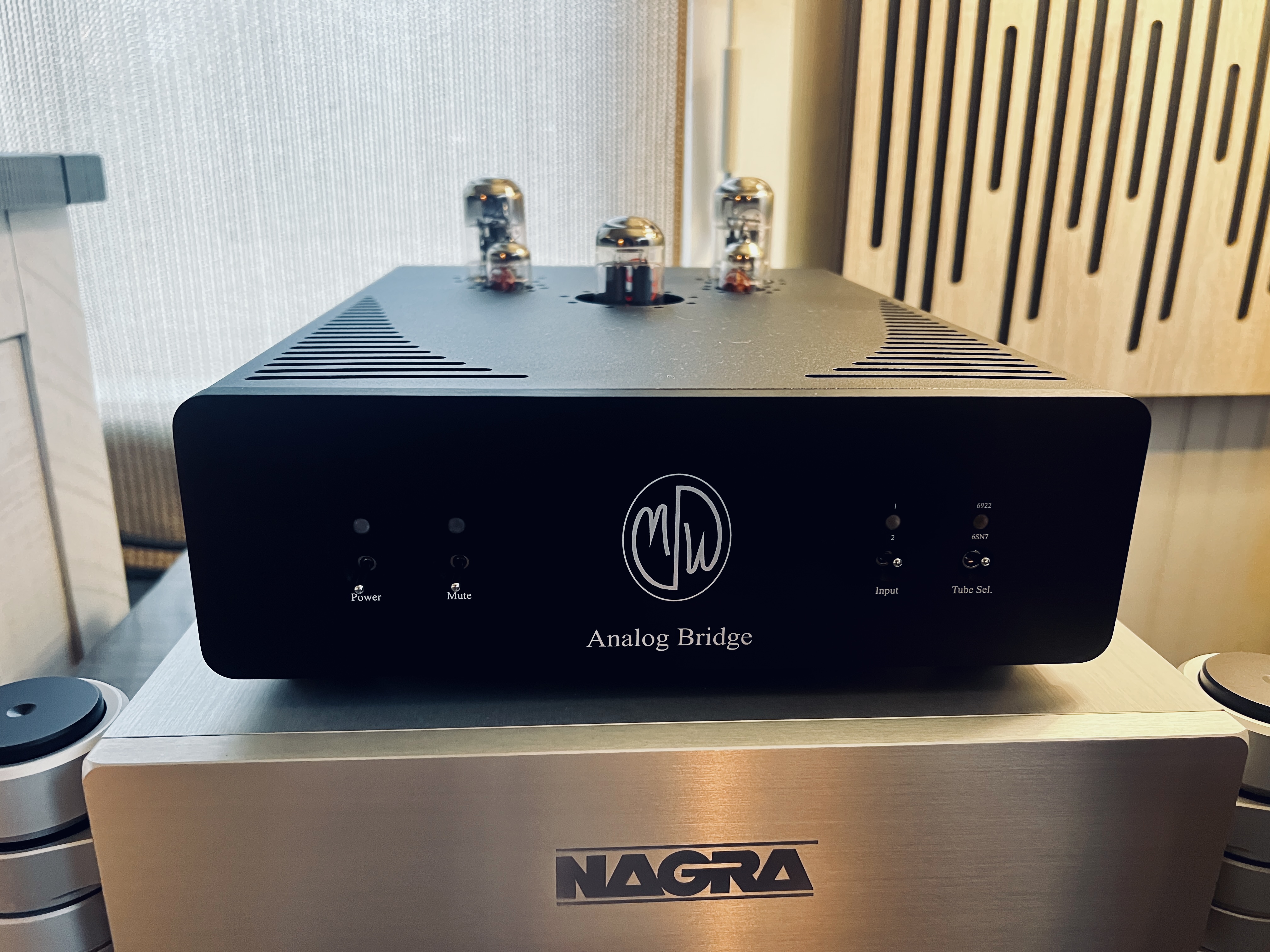
All in all, the “Tube Sound” is usually associated with warmth, a big soundstage, three dimensional effects and lovely rich and realistic human vocal reproduction. When tubes are in my system I almost always enjoy a more immersive kind of experience.
So this black box that houses these five tubes looks like a full bore all analog tube product because that is what it is. This Analog Bridge is designed to bring that tube flavor of sound and have it injected into your system with a flick of a switch. Not only this, there are dual modes so you can enjoy a couple of different tube presentations. One of them, for me, brought some warmth, body and glow. The other kept the speed and SS drive but added some sparkle and sweetness to the otherwise flatter presentation.
I have been testing the Analog Bridge here in my systems for the last 8-10 weeks or so and I am ready to write down my thoughts here. If you are one who doesn’t like to read long reviews I will bring forth a quick spoiler….
“If you are someone who has an audio system and feel you could use more warmth, more richness, more body or a larger soundstage and more tube like imaging then you should truly rush out and try this Analog Bridge as I feel you will love what it brings to an all solid state system.”
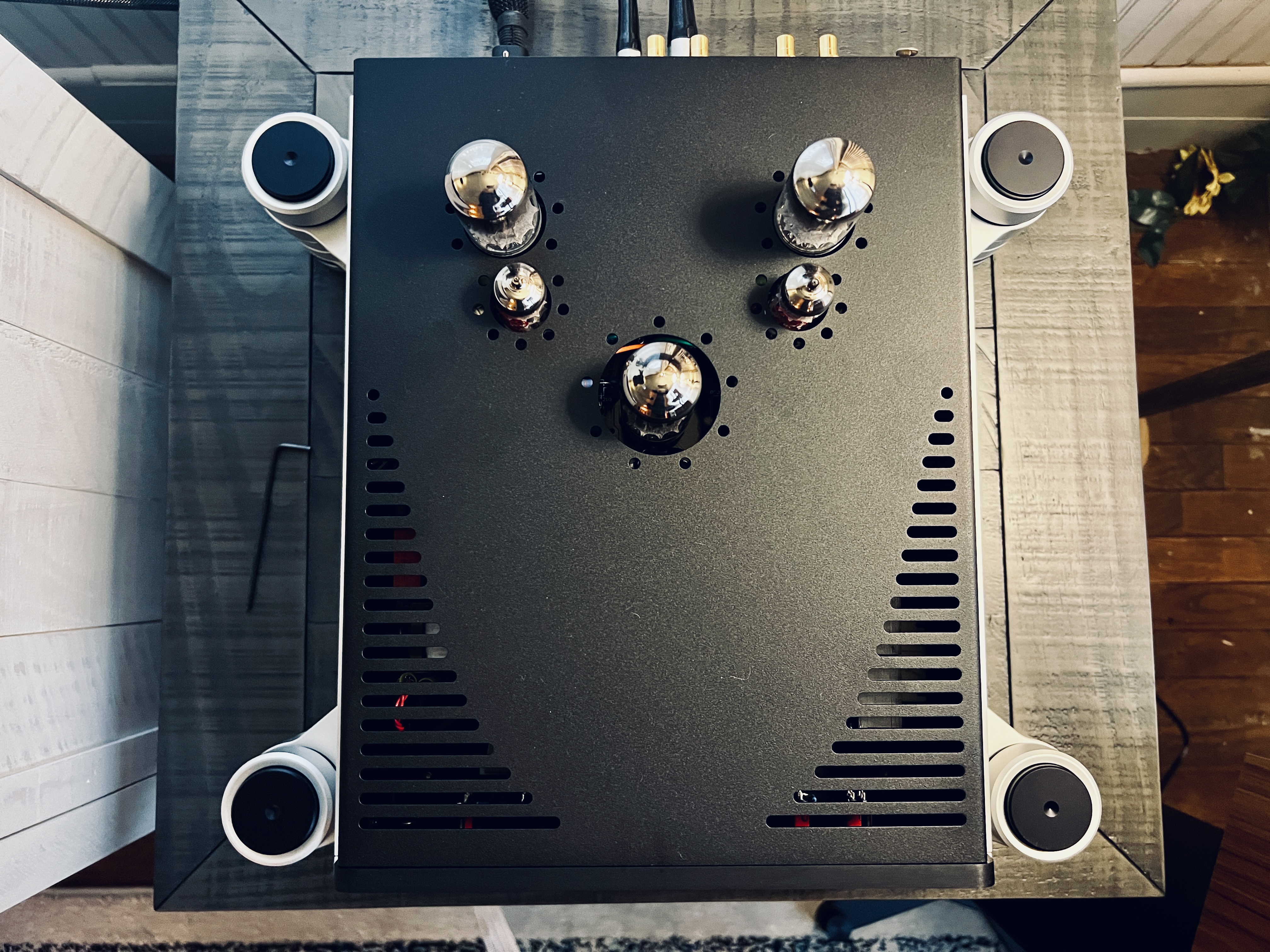
The Tube Compliment of the Analog Bridge
JJ GZ34 RECTIFIER TUBES:
- The rectifier tube can be changed to 5AR4, GZ34, 5R4GY, 274B, 5U4, 5U4G, 5U4GB, 5V4, 5V4G, 5V4GB. Virtually any rectifier tube can be used, provided it is pin compatible with those listed.
- The filament winding is rated for 3A. The supply circuit is designed to meet the requirements of any rectifiers’ tube data.
- There is enough headroom in the voltage regulator to allow for rectifier tubes with different levels of forward voltage drop.
- All rectifier tubes sound different. Some have tighter bass, others more bloom, some are warmer while others are faster.
JJ 6922 OUTPUT TUBES:
- The 6922 output tubes can be changed to 6DJ8, 7DJ8, 7308, ECC88. Many NOS options available.
- 6922 and compatible tubes are more neutral and detailed, which will suit some tastes and music better than the 6SN7.
JJ 6SN7 OUTPUT TUBES:
- The 6SN7 output tubes can be changed to CV181. Many NOS options are available for the 6SN7.
- The 6SN7 has a ‘fat tone’ and warmth, compared to the 6922 and as such, will suit some tastes and music better than the 6922.
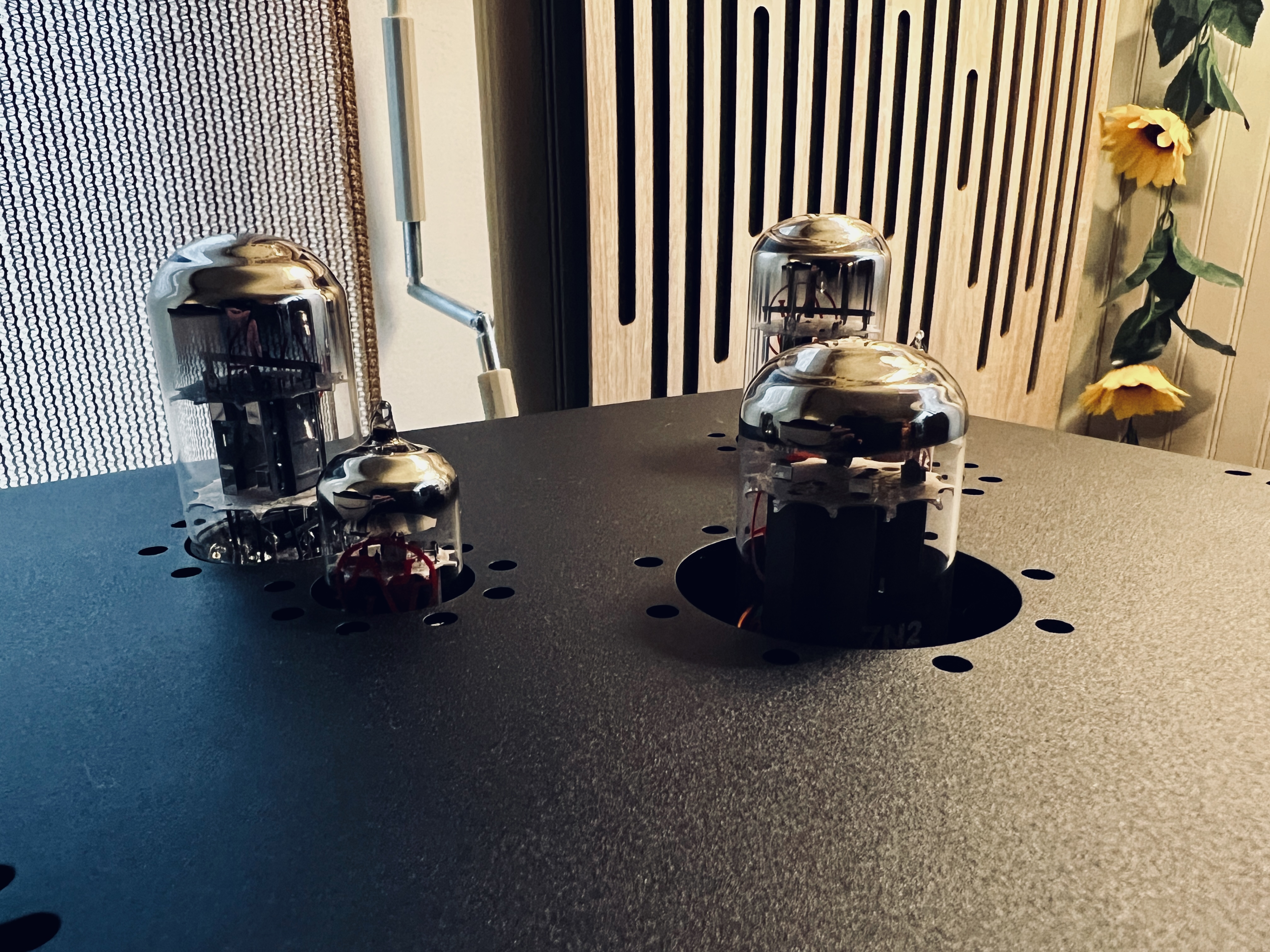
OK, The First Test
When the Analog Bridge first arrived I placed it between a HiFi Rose RD160 DAC and a T+A PA 3100 HV Integrated amplifier that was in for review at the time. Before the Analog Bridge was placed in I was enjoying the new RD160 DAC going into the T+A as the sound was fleshed out, sweet, and very dynamic, if not a little bit flat compared to my reference and some other DACs I have heard (that cost much more). This was a perfect test for the Analog Bridge as I wondered if this slight flatness I was hearing would go away with the Analog Bridge added in.
After listening to my playlists that I use for reviews and evaluations it was easy to hear what the Analog Bridge was doing within this setup. When placed between the DAC and AMP, both of which were solid state devices, the sound did change for the better. All of the sudden it did in fact sound as if this system had some tubes within it, because now it did.
The result was more body and fullness to the sound yet the details remained airy and present as ever. The sound warmed up slightly as well, which was nice. The soundstage grew wider and even taller as my Pure Audio Project Duet 15 speakers disappeared with greater ease. The sound was changed/improved but keep in mind these changes still kept the overall character of the system intact. The Analog Bridge did not take away anything at all but instead enhanced everything, in small ways, but well enough to easily hear what was happening.
Oh and this first listen was with the 6SN7 output tubes chosen, which is easily done with one of the metal switches on the front faceplate of the rather nice looking metal box. I now switched to the other tubes which are 6922/6dj8/7308 types. Now the sound was more alive and that ever so slight dark shading of the 6SN7 was gone. The sound was glorious and now I believe I preferred this setting as it kept all of the energy that was there and absolutely took away any hint of flatness that was here before the bridge was installed. Wow, this was sounding so good from top to bottom.
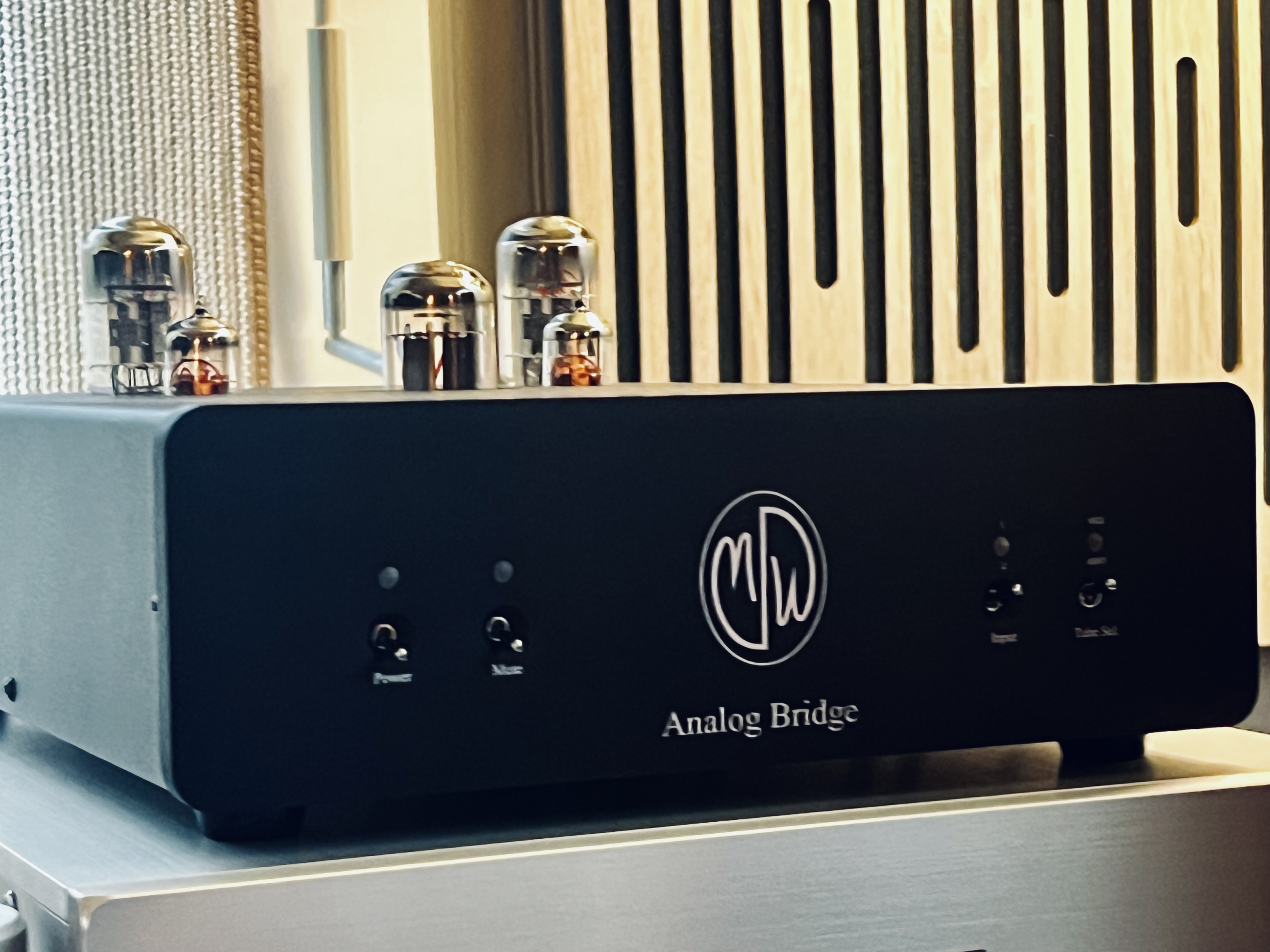
I flicked the switch again and went back to the 6SN7 tubes for that meatier sound and this time I threw on some music from Enigma, just letting the music play at random through a playlist.

The bass was deep, the impact was hitting and the bass was very impressive and when “Amen” came on I was really stricken as to how amazing it all sounded when the bridge was on. When I take out the bridge from the chain by turning it off, I now hear even more clearly what was happening when it was on. All of the sudden the sound is now less immersive, less “reach out and touch” and while it still sound freaking awesome, I am now missing what the Analog Bridge was doing and it was hard to be without it. It gave the system more meat, more flesh, more sweat.
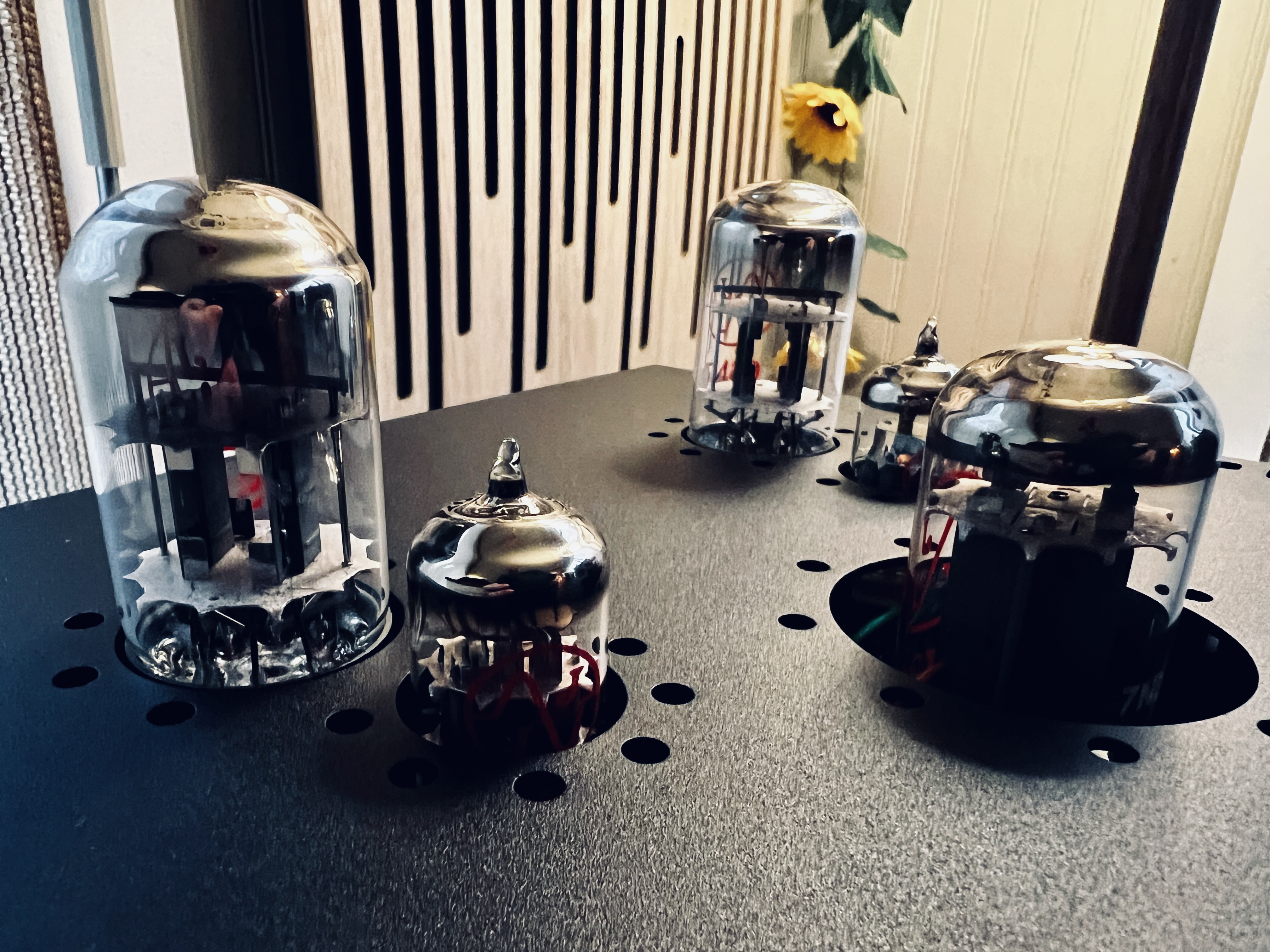
Weeks Go By
With the Analog Bridge in the system the weeks flew by and I was now testing it with my tube gear. Yes, putting the Analog Bridge in between even a Nagra HDX DAC and HD PRE, both of which use tubes. This yielded interesting results. These pieces sound like a more modern tube sound without the bridge and is just about perfect for these ears as is. But hey, I have the bridge here so let’s see what happens when we place it within a high cost reference system.
With the bridge installed between my Nagra pre and Nagra DAC (and switched to the 6SN7 setting) the sound got warmer, a shade darker and a touch juicer…as in more “pulp”. It was slight but noticeable with the first power up. I can not say it bested the stock sound of the Nagra pieces but it did as advertised and added some beauty to this already quite beautiful setup. So yea, it works well in all systems from low to high cost, from SS to even those with some tubes within it already. There is so much you can customize here as well with the tube compliments.
The Analog Bridge is Multi Use
The Analog Bridge can be used in several ways, not just between a DAC and AMP. In fact, ModWright suggest the following ways to add this bridge to your system:
1. Between digital or analog source(s) and preamp. – Any digital that is deemed thin, bright or lacking depth and body will definitely benefit. Even digital that is not bright, but lacks body, will benefit from tube body and weight.
2. Between preamp and amp. – An all SS system that customer feels is lacking in body, depth or warmth. Perhaps system is very resolving but uninvolving. The Analog Bridge will bring 3-dimensionality and broad soundstage to the system.
3. Between source and amp. – A simple system one or two sources (with integral volume control) and amp is ideal. It adds the sonic benefits of tubes while keeping the system simple. Very low output impedance means it will drive ANY amp.
4. Between passive attenuator and amp. – Same as above, source(s) – passive pre/attenuator – Analog Bridge – Amp. Analog bridge provides necessary buffering not provided by a passive.
Here are more details direct from ModWright as to how they suggest using the Analog Bridge:
1. SYSTEM USE – The Analog Bridge can be added to any system and allows customers numerous ways to improve and tailor their sound. Most importantly, it has very low noise, distortion, and wide bandwidth. It does not add undue coloration or take away anything from the signal path.
2. PURELY ANALOG – There are no integrated circuits, clocks, or other processors. This is a purely analog product. We chose toggle switches for this reason.
3. SOLID STATE & TUBE SYSTEMS – It is intended for use in an all-solid-state system that wants to add tubes. It ideally goes before the amp, because it offers exceptionally low output impedance which means it will interface with any amp very well! It can go in any system with tubes also. In this case, it would ideally follow a digital or analog source that is SS. The signal in a system starts with the source and even if there is a tube system that follows, the improved source signal will benefit the whole system.
4. ON-THE–FLY & 3 DIFFERENT TUBE TYPES – The Analog Bridge features two parallel output tube stages, that can be switched on-the-fly, via a toggle on the faceplate. One is 6922/6dj8/7308 and the other is 6SN7 based. Each tube type has its own tonal characteristics and rolling tubes by other manufacturers also allows for a change in sound. This circuit uses three different tube types: GZ34 rectifier and 6922 or 6SN7 driver tubes. The Analog Bridge is tube rectified and SS regulated, to allow rectifier tube rolling as a way of changing tonal characteristics of the Analog Bridge. SS voltage regulation is chosen for the best regulation and lowest noise and distortion possible. Tubes are exposed for easy access and tube rolling. Brief mute circuit is designed into the switching between tubes to prevent any DC issues.
5. COLOR SELECTION – The Analog Bridge comes in two color options. The chassis will always be black, but the faceplate can be changed to black or silver for system matching.
6. TUBE DISCOUNT – The Analog Bridge comes in two versions, RCA or XLR for balanced systems. We know that many customers already have collections of all three of the tubes used in the Analog Bridge. As you are aware, tubes are much more costly now. Because of this, we will give customers, the option of receiving the unit without stock tubes, at an appropriate additional discount due to the cost savings of not shipping with stock tubes. Customers can choose which tubes they want included in their purchase. If you choose not to include certain tube types with your purchase, the discount will be as follows: 6922: $60 Discount if not included. 6SN7: $60 Discount if not included. GZ34: $30 Discount if not included.
TECHNICAL SPECIFICATION BENEFITS:
1. INPUTS: (2) pair RCA – Optional (1) pair XLR with add cost balanced option. – Both RCA and XLR operation will sound the same. XLR option includes transformer coupling in and out (four Lundahl transformers) to insure fully balanced operation in and out.
2. OUTPUTS: (2) pair RCA – Optional (1) pair XLR with add cost balanced option. – While the sound of the Analog Bridge will be same via RCA or XLR inputs, a fully balanced system will sound best if fed balanced into the Analog Bridge. Also, if long cable runs are used, balanced cables WILL reduce overall noise and improve performance.
3. SWITCHES: Left to right – Power – Mute — Input (1 or 2) – Tube Select (6922 or 6SN7). Rear toggle selects balanced or RCA operation if balanced option installed. – Toggle on rear to select between RCA or XLR in to out. Only RCA in-out or XLR in-out operation, not RCA in and XLR out, etc.
4. GAIN: Unity. – It gives a significantly cleaner and undistorted signal.
5. NOISE: -105dB (unweighted) – Very quiet and will not introduce noise into the system.
6. FREQUENCY RESPONSE: (20Hz – 150Khz(-1dB)) – Considering that most digital gear is filtered at 60Khz – 100Khz, the Analog Bridge will NOT limit bandwidth.
7. THD: < .005% – Lower distortion is always the goal. Tubes will always produce their characteristic strengths of tone, depth, and body.
8. OUTPUT IMPEDENCE: < 20 ohm. – This allows the Analog Bridge to drive any preamp or amp with input impedance as low as 2K – 5K! Characteristic input impedance for most amps and preamps is 10K – 100K. Some SS gear has low input impedance, but the Analog Bridge will have no problem.
9. DIMENSIONS: 10.5“W x 3.5“H x 14.5“D.
- The Analog Bridge is a compact, single chassis product.
- Measured height from shelf to top of face plate. 3.5”
- Measured depth from front of faceplate to rear face of chassis. 13.5”
- Measured depth including RCA length. 14.5”
- Measured width edge-edge of face plate. 10.5”
- The Analog Bridge is sized to be more compact and ‘future friendly’ in a day when people are downsizing and looking to conserve space.
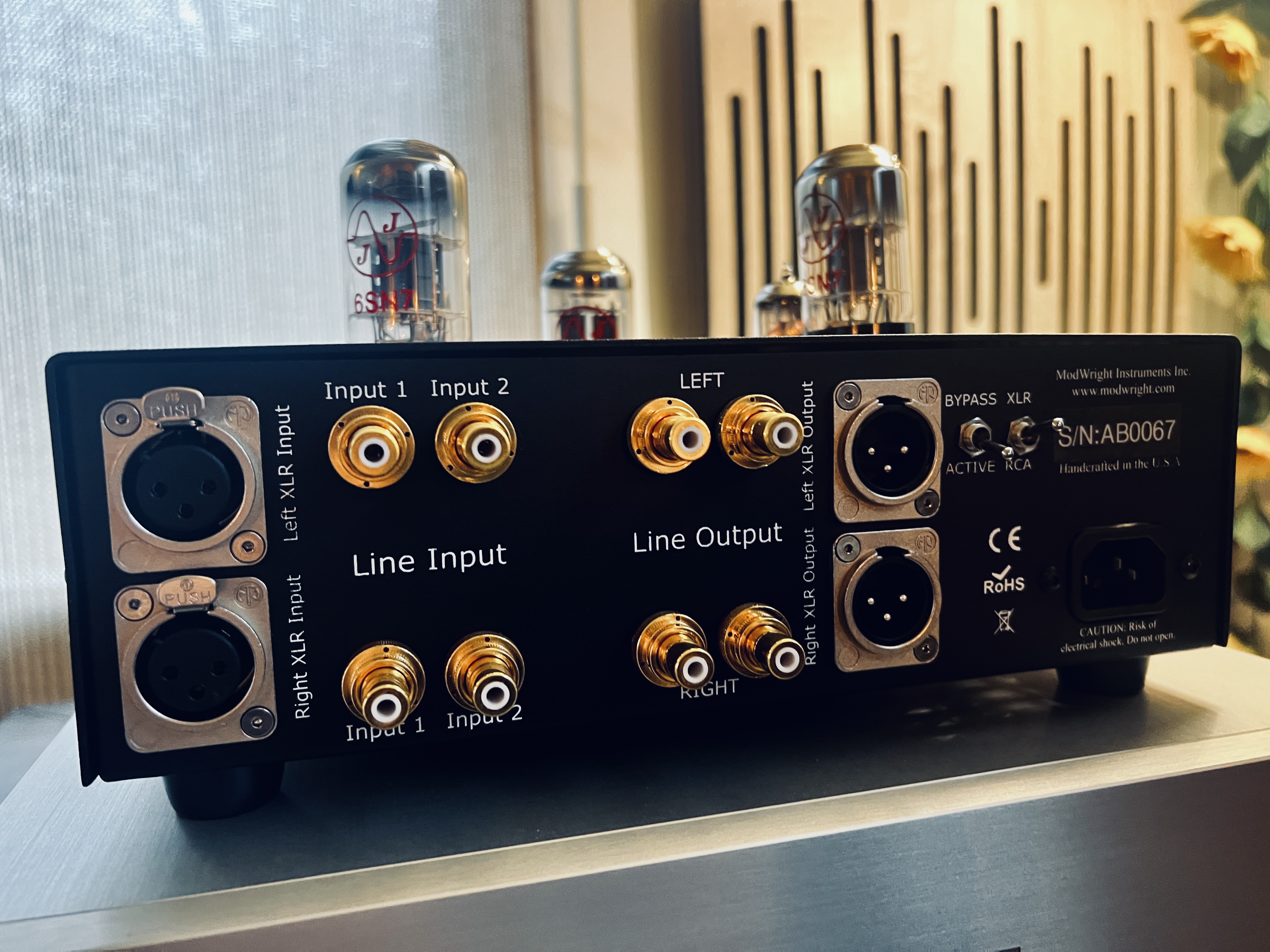
More Testing
As the days moved on I kept testing the Analog Bridge. Over the weeks I placed it between DAC and AMP as well as between my Preamp and Amp. I tested it with a HIFi Rose RA280 integrated, the T+A PA 3100 HV integrated amp as well as my reference Nagra HD setup. When I placed the bridge between the RA280 integrated amp and Nagra HDX DAC I noticed more silkiness and more body, which was a difference from the stock sound but the Nagra character of sound, or the “house sound” was still 100% intact from the DAC. I also heard the Class D RA280 get more juiced up, but again, this is not dramatic or going to take over your system. Rather the bridge just sits and does its thing and the more you listen, the more you hear these changes.
The best way to hear this bridge IMO is within an all solid state system as it can really add some magic to those systems who lack it the most.
I heard no negative effects with the bridge in place over the last several weeks. No noise, no buzzes or hums. It just does what it claims to do and it does it with style, class and without issue or error.
No matter how I placed it within the system the sound did in fact gain beauty with enhanced imaging and 3D immersion but I enjoyed it most between the HiFi Rose RD160 DAC and T+A PA 3100 HV. Here it truly made magic and brought that already fantastic Rose DAC sound as if it had tubes within it all of the sudden.
The Analog Bridge comes standard with RCA inputs and outputs. You can add XLR for an extra $1k and this is the model I have here, the XLR model. It comes in at $3900 or $2900 for the RCA model. No matter which one you choose the Analog Bridge will add some warmth, body and life to your system, especially if it currently sounds a bit flat, sterile or lacks magic.
In addition to the sound quality improvements it brings this device is very well made and looks fantastic. This comes from a well respected name and it is a high end piece but one that is like a tweak or additive to the system, to help it with harmonics, beauty and a more solid foundation. The Analog Bridge can also be used within a system that already has some tubes, as I did with the Nagra HD Pre (tubes) going into a Nagra Classic Amp (Solid State).
BTW this one is made here in the USA from a USA company. ModWright makes some fantastic quality gear.

Overall I found the Analog Bridge to be one of the most effective tweaks/additions I have ever encountered. It’s well made, silent in operation and truly does what it claims. While the effects will be greater in some systems vs others it truly works magic in some configurations. If you ever wanted a dose of tube warmth without having to deal with an all tube amp (heat, tube life) or an exotic tubed preamp (costly for the good stuff) then the Analog Bridge is perfect for you. The tubes will last 5-10k hours, it doesn’t run hot, and it’s a simple device to use. Just flick a switch and it will inject a dose of tube magic to any system. What is not to like? I have tried “tube buffers” in the past but none were quite like the Analog Bridge as I heard very little change with the two much less advanced buffer products I tried in years past.
I will just say this. If I owned a full solid state hifi system that needed more warmth, body, fullness, airiness, wider stage, taller stage or more involvement along with more immersion then I would 100% own the Analog Bridge. Two tube flavors or none at all if you keep it off with the ability to even change tube types for more experimentation. There was nothing here I did not absolutely love. Bravo to ModWright for creating this one! It’s unique and if I gave awards this piece would get one without question. I’d buy the review unit if I could, just to use it for future reviews, and to see how it does with pieces that are yet to come. Maybe one day I will. It’s a sweet piece.
Check out MORE INFO at the Modwright Instruments Website HERE.


